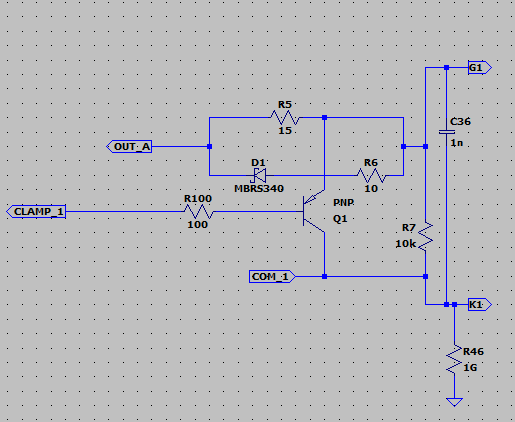Hello,
I would like to know if it is possible to drive all three SIC MOSFETs in parallel with a single gate drive (UCC5350). Do I need to add a PNP at each gate?

Regards,
Ikenna.
This thread has been locked.
If you have a related question, please click the "Ask a related question" button in the top right corner. The newly created question will be automatically linked to this question.
Hello,
I would like to know if it is possible to drive all three SIC MOSFETs in parallel with a single gate drive (UCC5350). Do I need to add a PNP at each gate?

Regards,
Ikenna.
Hi Ikenna,
Thank you for your question! Yes, it is possible to drive three FETs at once with this device. Some things to consider is that since there are three FETs, there will be three capacitors to charge up and discharge. This will slow down turn on and turn off time. Another thing to consider is the thermal capability. The power loss will be three times larger for the three capacitors and you have to make sure that it is within the recommended safety thermal ratings.
A PNP for each gate is also recommended. There was a previous E2E here so you can look at that to learn more. Here is also an article with important information on this topic.
Regards,
Akshat
Hello Akshat,
Thanks for replying to my question, but I still have other questions to ask. I know since I have three SIC MOSFETs in parallel, this will increase the amount of drive current. I would like to know how I can calculate the drive current. I know the frequency I am using to switch my FET and the total gate charge (Qg). I just need to know the formula to be sure I am calculating the right thing.
What happens if I use a resistor in each clamp instead of a PNP as DON suggests? Just to let you know, this is a high power board of up to 60 kW. I hope I will not have problems with the gate drive when testing for high voltage and high current.
Regards,
Ikenna
Hi Ikenna,
There are other factors that can affect gate drive that cannot be done with just calculations. This article can explain about gate resistor selection, since it is the most important factor is determining gate drive strength. Here is also another article to help understand and calculate/measure gate drive strength.
Also the circuit can be done by both the PNP transistor and the resistor. However, the PNP transistor is simply better and controlling current flow because of its own properties vs a simple resistor. That is why we recommend a PNP.
Regards,
Akshat
Hello Akshat,
Thanks once more for your help. Can you please help me to check this image if it is the right way to connect the pnp? This will be connected to my SIC MOSFETs.
OUT_A: Output signal from the gate drive.
G1: Connect to the gate of SIC MOSFET.
COM_1,K1: Connected to the kelvin pin of the SIC MOSFETs.

Regards,
Ikenna.